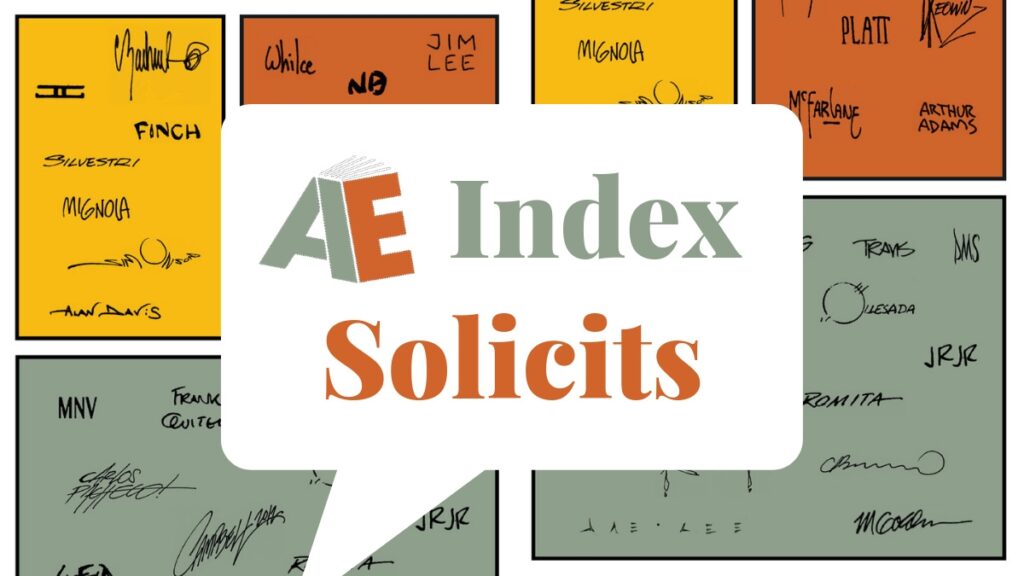Ten years ago IDW launched the first Artist’s Edition, creating a new format in collected comics and establishing themselves as the preeminent original art publisher. Since then 116 similar volumes from thirteen publishers have hit the market. An astounding achievement archiving comics history. And yet these volumes are still relatively unknown in and out of the comics market. Let’s take a look at the milestones of this format from the last decade.
I’ll be weaving the tale of the first few Artist’s Editions, providing quotes around each release and commentary by those involved. An oral history in this internet age. Along with my personal experiences as this new format emerged.
On May 03 2010 IDW announced a new type of book: an Artist’s Edition. Here’s the press release in full.
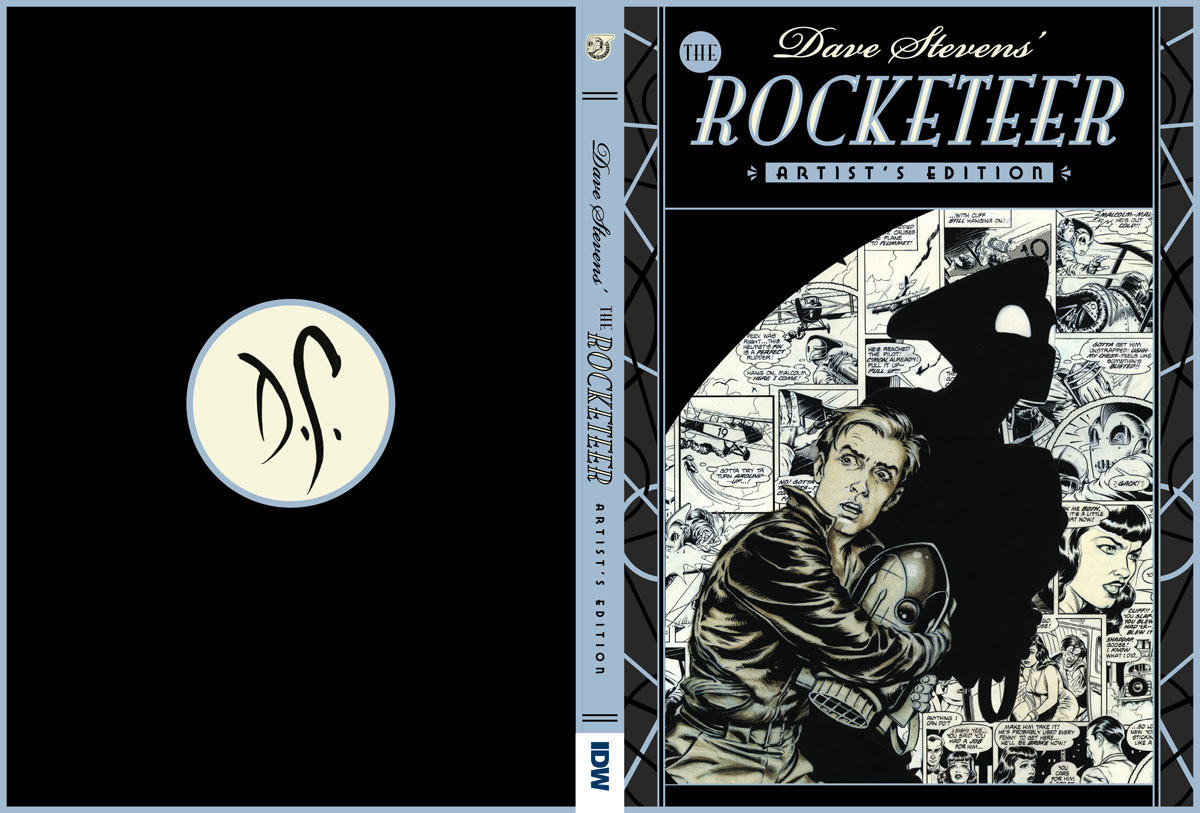
IDW Publishing and the estate of Dave Stevens are pleased to announce a very special book honoring the work of this esteemed creator. Dave Stevens’ The Rocketeer: Artist’s Edition will be a mammoth 12″ x 17″ hardcover book printed in glorious black and white. Nearly every page in The Rocketeer has been scanned from Stevens’ original art to ensure the best possible reproduction and highest degree of accuracy. Printed on uncoated stock and at the same size as the original art, Dave Stevens’ The Rocketeer: Artist’s Edition will be the next best thing to holding the actual art by Dave Stevens.
“This is the Dave Stevens book I’ve been chomping at the bit to do,” said IDW Special Projects Editor Scott Dunbier. “As an art lover, I can’t imagine a finer book on Dave’s work.”
Dave Stevens’ The Rocketeer: Artist’s Edition will be available exclusively through IDW Publishing and will launch at San Diego Comic Con International on July 21, 2010. Rocketeer fans can pre-order this one-of-a-kind collection now at IDWPublishing.com, and choose to pick up their book at the IDW booth or have it mailed after the convention. Quantities will be extremely limited, so fans are encouraged to order early.
Dave Stevens’ The Rocketeer: Artist’s Edition ($100, 136 pages; 12″ x 17″; hardcover; black and white) will be available from IDW in July. To pre-order for pick up at San Diego Comic Con, click here. To pre-order for shipment, click here.
IDW Publishing
That same day I placed my order online; Comic-Con was out of the question but I could get it shipped! I’m a digital packrat and have every email so I was able to locate my receipt from May 04. $100 USD and $32.25 USD shipping to Canada.
By May 10 IDW had decided to make this book available via Diamond distributing to local comic shops, albeit at a reduced discount. Cliff Biggers has asked Scott Dunbier if the book could be available to comic shops, so IDW offered it at a reduced discount level because of the production costs. I cancelled my online order and placed a new order with my local comic shop. It debuted at Comic-Con 2010, and on August 18 2010 Dave Stevens’ The Rocketeer Artist’s Edition arrived at my local comic shop. And I was stricken.
I had been collecting original art for several years and was familiar with the boards themselves but had never imagined having an entire storyline of original art as a reading experience. Who could afford such an experience? With the Artist’s Edition, a whole lot. $100 was more than most comic collections, but it was a fraction of what one page of Dave Stevens art sold for. Plus it shipped in its own cardboard case, so I wasn’t worried about storage.
It was something completely new and had to be described repeatedly to everyone who wanted to know more. Oddly, there are very few reviews online and few of them have photos. I’m just as guilty, as I waited until this site was in full swing before I reviewed this first Artist’s Edition. Here’s an early description of the format.
It’s a book that is scanned from the original art in color, so when you see the printed pages, it appears to be in black and white, but it’s really in color.
You can see all the little nooks and crannies. You can see the whiteout. You can see the corrections. You feel like you have the actual page in front of you. It’s a wonderful thing to be able to print a book that really shows you what great original art looks like up close and personal.
Newsarama, 2011
Scott Dunbier is IDW’s special projects editor and brought the format to life. Here is Scott talking with Scoop in 2011.
Scoop: How did the concept of doing the Artist’s Edition books come about?
Scott Dunbier (SD): The first impulse for it probably goes back 20 or more years, when I started making color photocopies of art because regular B&W copies looked so crappy. But a color copy was a different thing entirely; you could see all the fine details. Later, I got a copy of Chip Kidd’s Batman Collected book. It had a beautiful Neal Adams page from Batman #251, with Batman fighting a shark. It was photographed in color and looked incredible, you could see the line work, but also white out, blue pencil editorial scribbles, everything—it was beautiful.Scoop: Was this always part of the plans when you were working on the regular and deluxe editions of The Rocketeer or did it develop from their successes?
SD: It always was for me, yes. I had wanted to do something like this for ages, and here was one of the most beautifully drawn books of all time—it was almost too good to be true!Scoop: What sort of technical work went into putting that one together?
Scoop
SD: Well, that one was fairly easy, thanks to a couple of friends. David Mandel and Kelvin Mao were good friends of Dave and had been helping the estate after he died in 2008, just before I arrived at IDW. Kelvin had scanned most of the art himself, nearly all was in the hands of the family, and the rest David, Kelvin and I managed to track down. Then it was just putting in the hours to get it done right.
Randall Dahlk did the design for this and more more Artist’s Editions. Shortly after the book was announced he posted his thoughts about it.
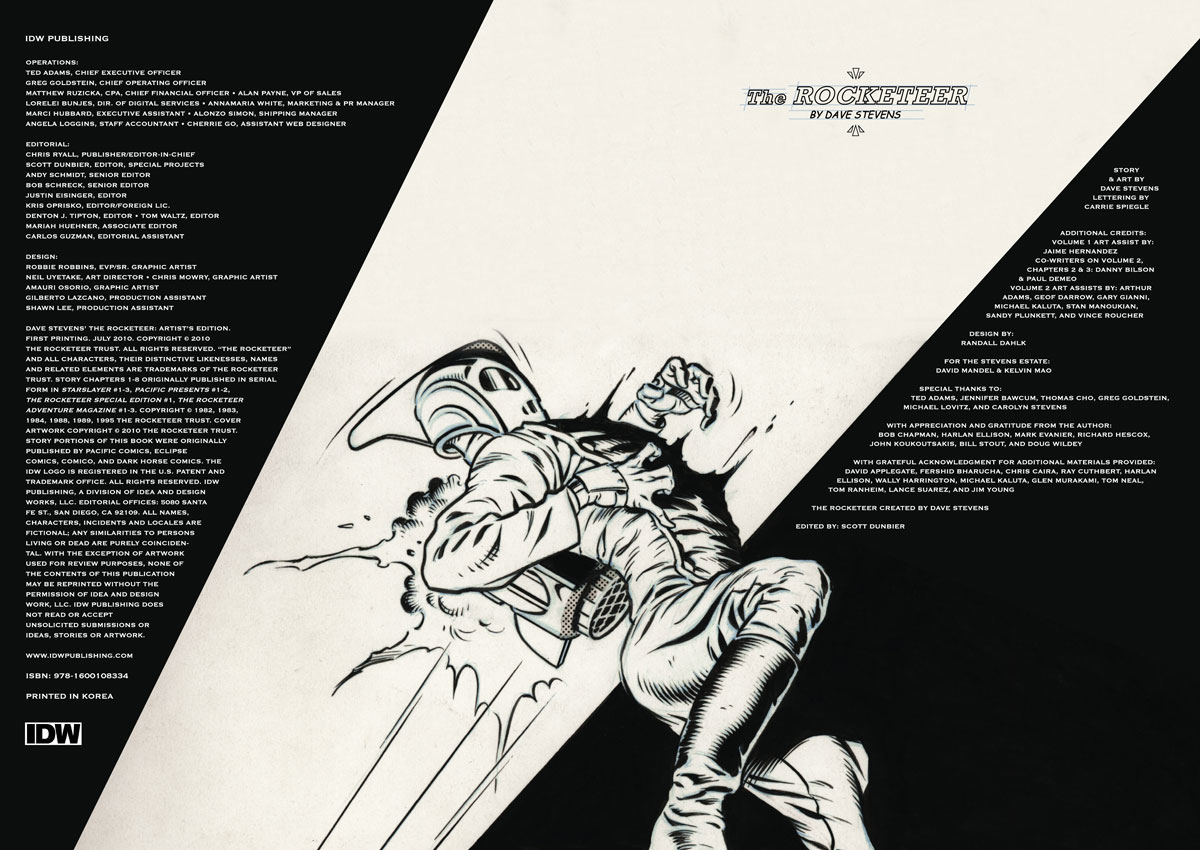
This was IDW’s editor Scott Dunbier’s dream project. This book contains the original artwork from the entire Rocketeer story shot at original size. That means the size of the book is 12″ x 17.” It is spectacular in it’s enormity. The book weighs in at about 4 pounds. It is a hefty, beefy, masculine volume.
Even though the artwork is basically black and white, all the pages were scanned in color. Because of this, you can see all the blueline art that was part of the creation process. This is the closest you can come to looking at a Dave Steven’s original without owning one. When it comes to illustration work, I’m kind of a process junkie. I love seeing all of the peliminary sketches and design that go into creating a page of art. These pages are certainly an eye opening experience. The detail that Dave puts into each panel can only be appreciated at it’s actual size. It was almost like discovering his art for the first time. His ability to create atmosphere and character expression, along with the craftsmanship of inking with a brush really shines on these pages. This takes the idea of “funny books” to a whole new level. The stuff is really beautiful!
The book will be sold directly through IDW, so check out their website. I have a feeling this will sell out rather quickly, remember the Deluxe Edition of the Rocketeer? The price on it is $100.00, not really cheap, but certainly worth it for something as unique and beautiful as this.
Retro Randy blog
The Stevens’ estate representatives David Mandel and Kelvin Mao were integral in the process but received little press. Here are Mao’s memories around the book.
It’s hard to separate the work David Mandel and I did on The Rocketeer Artist Edition from the year spent on The Rocketeer: The Complete Adventures and The Complete Adventures Deluxe Edition as we went straight from collecting the recolored Rocketeer stories to the Artist Edition. To me it’s one giant blur of late nights and weekend, endless scanning, cleaning up images and laying out of pages.
One thing that sticks with me was the obsession of trying to locate all the pages in order to get print quality scans. Dave Stevens kept the vast majority of art from both Rocketeer stories but had gifted or sold 9 pages from the first story and 4 from Cliff’s New York Adventure. This could have been a needle/haystack situation, but David Mandel and I were veteran original art collectors and had a good idea where to look. Editor Scott Dunbier was in fact a major comic art dealer prior to his career editing the books, so he had plenty of leads too. In addition to collectors, we contacted everyone who had ever worked on any of the original issues, publishers, editors, letters, colorists, artist friends of Dave who pitched in here and there, pretty much anyone we could think of, and managed to track down all but 3 pages in time for Laura Martin to recolor both stories. Fortunately, we were able to use old B/W film for the missing pages.
But even after the Collected Adventures had gone to press, we kept searching for pages. Months went by with no luck and we figured this might end up being one of those lifelong quests. While compiling The Collector Adventures, David and I would often discuss how cool it would be if everyone could see how clean and beautiful the original art was. Dave rarely pulled it out to show people, so it sat almost untouched in the bottom drawer of this giant cabinet in his studio for decades. Years before, Scott had an idea for publishing complete comic stories scanned from the original art and printed at full size – like a portfolio but the plates would be a complete story. At the time I think he was looking at old Jack Kirby Marvel stories, but procuring licensing was an obstacle and he was busy with a full-time job as Group Editor at Wildstorm/DC, so it never really got off the ground. After finishing The Complete Adventures- with nearly all the original art scanned, he realized that fate had converged to provide an opportunity.
There was still the task of convincing the money people at IDW to do this. It sounded like an expensive vanity project- and I guess it kinda was. I remember a lot of hand-wringing when it came down to figuring out the print run as no one had ever done a book like this- both from a physical size standpoint or a price point. I always wondered if the odd print run size of the first printing wasn’t just based on some kind of printing price break as opposed to any sales estimate. I recall Scott sending out a ton of press comps. He was always savvy about that kind of thing and even got a write-up in the LA Times.
But back to the hunt for the missing art. I had pretty much given up after posting images of the missing pages on message boards and other online forums for months with no success. Just as The Rocketeer Artist’s Edition was headed to press, a collector we’d never heard of contacted David to say he had a page. It was the one where Bettie’s tied up in the backseat, a page that Jaime Hernandez had worked on- and one of the missing pages! We notified Scott and got the owner to overnight a scan just in time to slip it into the book. I remember that triumphant feeling… and then thinking- there’s two still out there!
In the intervening 10 years the last two pages have turned up- one in auction, the other buried deep in a collection. And it’s my hope that someday we’ll get to do a 3rd printing and replace the two pages that read, “One of two pages not scanned from the original art.”
And something else most people probably don’t realize – back then there weren’t concrete plans to do other books. That came in the scramble after the Rocketeer Artist Edition sold out. We were all braced for the book to potentially lose money.
Kelvin Mao, October 2020
IDW doesn’t release print runs or sales figures, but Comics.org lists the print run at 1400 and Comichron shows first-month sales of 531.
At the 2011 Eisner Awards, IDW took home two for their first Artist’s Edition: Best Archival Collection/Project–Comic Books and Best Publication Design.
In February 2013 a second printing was offered with two different covers, both of which sold out.
Who could have imagined where this Artist’s Edition would take us in ten years.
It is our hope that Dave Stevens’ The Rocketeer: Artist’s Edition will be the first in a series of books dedicated to showcasing outstanding artists in a format as special as their work deserves.
Dave Stevens’ The Rocketeer: Artist’s Edition
As an aside, it took IDW three years and 15 Artist’s Editions to finally drop that colon from the title.
Sales must have been good enough, as a second Artist’s Edition was announced at WonderCon 2011 for release at San Diego Comic-Con 2011. Walter Simonson’s The Mighty Thor: Artist’s Edition arrived at local comic shops on August 3, 2011. The press release.
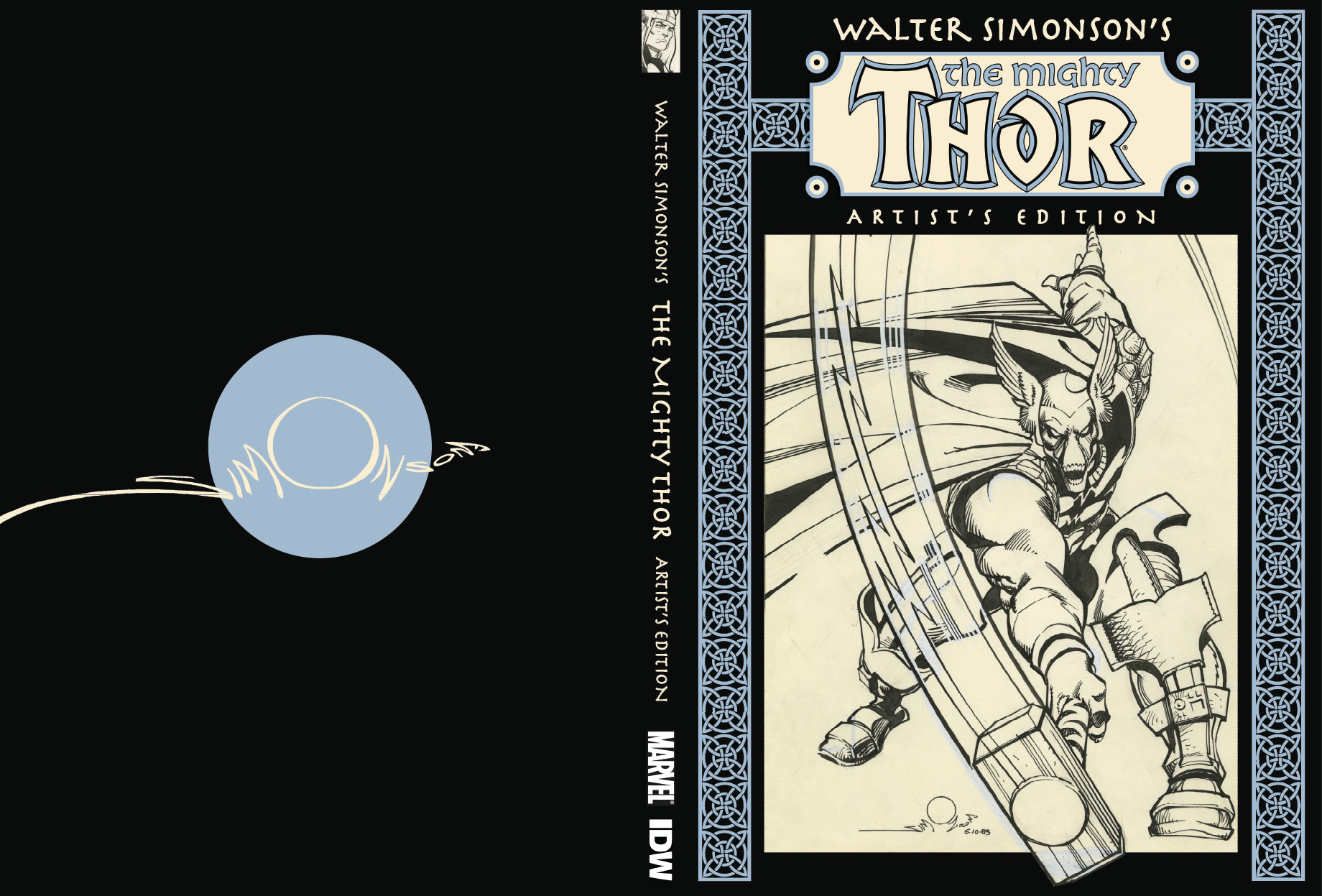
Walter Simonson, legendary comics writer and artist of an overwhelmingly impressive catalog of books, will appear at the IDW booth every day during the 2011 San Diego Comic-Con, signing copies of WALTER SIMONSON’S THE MIGHTY THOR: ARTIST’S EDITION. In addition to the regular edition available in July at comic stores, IDW will offer a limited Comic-Con exclusive edition featuring a variant cover, only available through IDW at the convention. Readers can now pre-order both editions direct from IDW Publishing for pick up at Comic-Con. The regular edition is also available for mail delivery, and orders will be filled after San Diego Comic-Con. The Comic-Con exclusive edition will only be available at the convention.
“I wrote and drew The Mighty Thor for Marvel more 25 years ago now, at a time when it was the fate of old comics to be deployed to the back issue bins in comic shops and at conventions. No one had any expectations of reprints or trade collections. Now, it’s a new day,” said Simonson. “I’m pleased that IDW and Marvel have seen fit to go back and revisit this work as they have. I couldn’t be more delighted to know Thor, Beta Ray Bill, and all their friends turned out to have a much longer shelf-life than I would ever have imagined.”
An oversized, hardcover collection, WALTER SIMONSON’S THE MIGHTY THOR: ARTIST’S EDITION will present Thor 337-340, Simonson’s first classic story arc, which introduced Beta Ray Bill, and Thor 360-362, Simonson’s choice for the second arc in the book. All the pages in the ARTIST’S EDITION have been scanned from Simonson’s personal original art to ensure the highest possible quality reproduction. While appearing to be in black and white, each page was scanned in color to mimic as closely as possible the experience of viewing the actual original art—for instance, white-out corrections and blue pencil notations.
“Walter’s run on The Mighty Thor is one of the best ever in comics—period,” said editor Scott Dunbier, “and to be able to see it now as an Artist’s Edition, printed the same size as drawn, and scanned from all the originals… well, I just can’t wait to get my paws on it!”
This will be Simonson’s first visit to San Diego Comic-Con since 2004. Joining Simonson will be his wife, Louise “Weezie” Simonson, a noted comic book editor and writer. WALTER SIMONSON’S THE MIGHTY THOR: ARTIST’S EDITION will be the first in a series of Artist’s Editions featuring legendary creators and comics from Marvel.
IDW Publishing via Comic-Con Geek
It had been a year since the first announcement and only nine months since the first Artist’s Edition was released. Clearly it met or surpassed sales expectations.
Dunbier told CBR that he’d long been interested in the Artist’s Edition concept. “It’s something that I wanted to do for a long time, a beautiful art book that would collect stories in a purely natural form, without any coloring, without any cleanup, actually photographing the work so you can see it in its base element, as original art,” he said.
“[‘Rocketeer: The Artist’s Edition’] was an expensive undertaking, but luckily people responded to it. And I thought they would, because people really do appreciate beautiful books and beautiful art, and you can’t get much more beautiful than Dave Stevens,” Dunbier continued. “But after we did the Artist’s Edition, I started thinking about different types of things that are available. I had a few ideas, but I kept coming back to Marvel. Marvel obviously has an incredible publishing history. Some of the greatest artists ever to work in comics worked at Marvel. Leading up to San Diego Comic-Con last year, I approached some people at Marvel. I sent them copies of the Stevens Artist’s Edition book when we had advance copies, and I’ve got to say they were pretty blown away by it. It was a pretty refreshing attitude they came into this with. They looked at this book and said, ‘Wow, this is something that we would want to have on our bookshelves. It took several months, but we talked back and forth and eventually we struck a deal. The first book will be ‘Walter Simonson’s The Mighty Thor: Artist’s Edition.’ That’ll be coming out at San Diego Comic-Con. I couldn’t be more excited about it. That will be the first of the Marvel Artist’s Editions we’ll be doing.”
As to what makes Simonson’s art ideal for the format, Dunbier said “there are a number of different factors,” including practical matters of accessibility. “One of the most basic things, obviously to do an Artist Edition you have to have access to the original art. Walter is one of those artists who does not enjoy parting with his work, and so he has a very large percentage of what he’s done over the years still in his possession. So I was able to just go over to his house and scan the work,” Dunbier told CBR. “But as far as what makes his work in particular suited to an Artist’s Edition, you look at his work and it’s the raw vitality, the raw energy, of a Walter Simonson page. It bursts off the paper. You look at it and it’s glorious to behold.
Dunbier noted that Artist’s Editions differ from other art-focused books or publications reprinting original art because they collect complete stories. “With ‘Rocketeer,’ we were missing a grand total of two pages, that we did print from black and white stats, but the pages were there — we were missing two originals in that case,” the editor said. “In the case of Walter’s ‘Thor,’ we had every single page of the seven issues that we’re collecting.”
For aspiring artists hoping to learn from Simonson’s, Stevens’, and other artists’ raw art, Dunbier said, a book such as this “really is invaluable.” “You can go to comic book shows and see who’s hanging out around original art tables, it’s always fans but also a lot of pencillers, inkers, people who want to learn from a great artist. Looking at this book, or the Dave Stevens book since it’s already out, you can see every brush stroke. You can see every bit of whiteout and blue pencil. You get the feeling of really being able to piece together what an artist was thinking. It’s there for you to discover if you can read it properly. And nothing beats looking at great art by a great artist.”
Asked who might be the subject of future Marvel Artist’s Edition volumes, Dunbier laughed, “I’m not going to tell you.” He did offer that “we actually have a fair number of Artist’s Editions that we’re working on, at San Diego we’ll probably announce a couple more at least. I’m always trying to think of new Artist Editions to do.”
Scott Dunbier via CBR
For the second Artist’s Edition, IDW was offering a convention variant cover and an extremely limited remarqued cover. Plus, the artist was signing at the IDW booth the entire show. It appears fifteen remarqued covers were done in total. Walter Simonson posted many of these covers on Facebook in 2011. These convention exclusives made a limited product even more limited and helped offset the cost of the book by selling directly to the consumer.
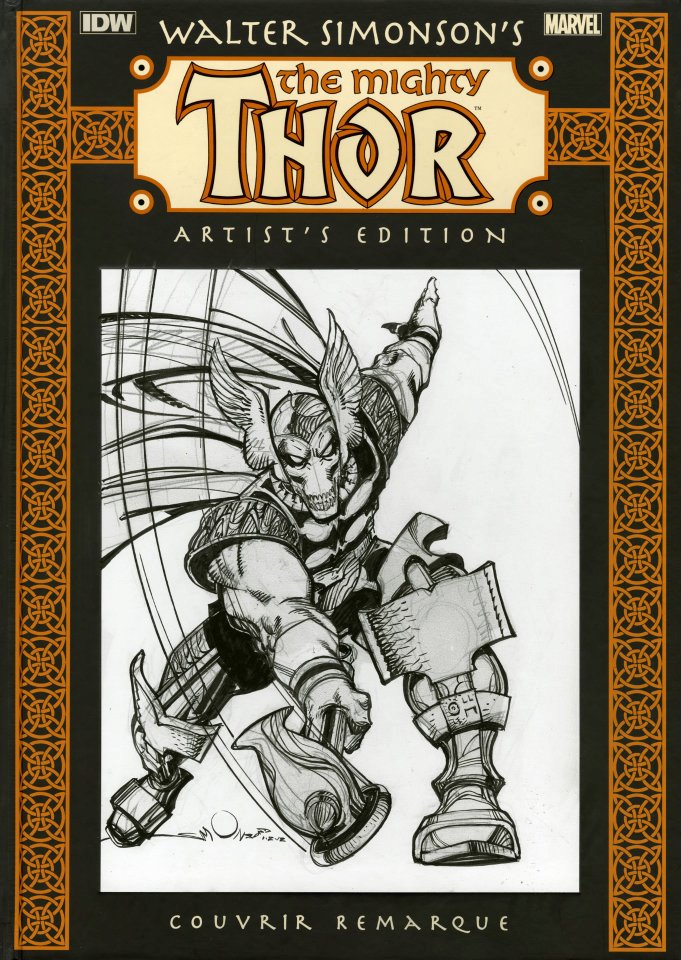
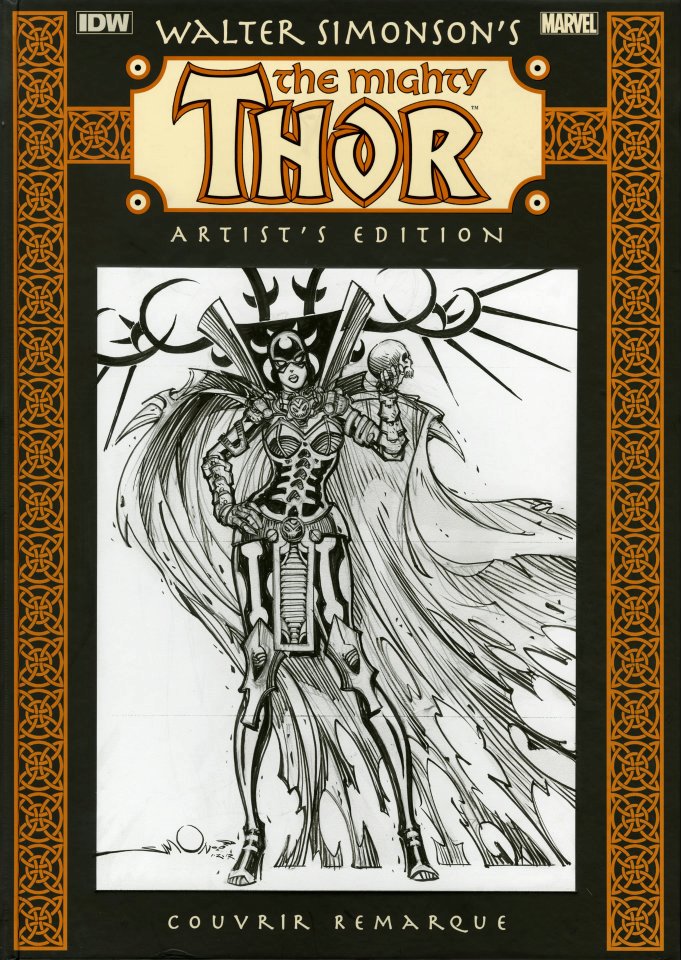

“We’re also doing another edition of the book that’s really nothing short of amazing,” Dunbier revealed. “We’re doing an edition that is limited to 10 copies — yes, really, 10 copies! Each one comes in its own hand-made slipcase, which is unique to this edition, and each one has a hand-drawn cover by Walter. Which is why we’re only doing 10! The drawing is a fully inked piece by Walter, each one unique. The slipcase was made to protect the cover art. It’s really incredible! “I really think that, in a convention full of great exclusives, this will be the most exclusive exclusive anybody can find at San Diego Comic-Con.”
There will be one copy on display at IDW’s booth that Simonson has drawn, and fans will have the opportunity to come by and look at it. IDW will make these rare editions available to collectors at a later date, once all the covers have been created.
Scott Dunbier via CBR
A lot of press was focused on IDW securing the rights to reprint Marvel material. And with this announcement was the news that more Artist’s Editions were being worked on.
…because it’s actually not necessarily something that Marvel would do. It’s going to be probably a fairly small run and we’re such a small company that the projects are worthwhile for us, but they’re not something that Marvel looks for. The run is probably going to be under 5000 copies and it’s going to be a lot of effort to put the book together. It’s going to be a very large hardcover book and the art is scanned from the original art. One of our editors actually went to Walter’s house and gathered all the art with him and scanned the pages in and they’re going to be re-printed at actual size. That’s really what these books, the Artist Editions, are about showing people the original art in such amazing detail.
AnnaMarie White via Geeks Of Doom
That mention of a print run “under 5000” is quite interesting, since IDW doesn’t release print runs. And a little background on the process of the book and what was required.
As we announced at WonderCon this weekend, we’re publishing Walter Simonson‘s THOR in an oversize hardcover ARTISTS EDITION, similar to the Dave Stevens ROCKETEER book we did last year.
Which still blows me away. Not only for the sheer fact of us publishing this material in a joint venture with Marvel Comics, but also because of the material itself. Anyone who picked up that original copy of THOR 337, with Beta Ray Bill dressed like Thor and smashing the Thor logo with a new, stylized hammer, remembers the jolt of excitement and creative that that issue heralded.
It still remains the THOR run against which all others are measured, I think — even seeing John Workman’s hand-lettering on the new Matt Fraction run serves as a pleasant nod back to Workman’s amazing work on Walter’s run. It’s rare that the letterer becomes an instantly recognizable and important part of a page, but Workman did that with his balloons, his fonts, everything he did to accentuate Walter’s work. So running these pages at full size, scanned from the originals, is going to just make for a gorgeous book. I’m really appreciative to Marvel for letting this happen.
Chris Ryall blog
Marvel has been fantastic. I wasn’t sure we could convince them to let us license this material but when I sent them Dave Stevens’ The Rocketeer Artist’s Edition they were sold on the concept. After that it was just a matter of settling deal points.
Scott Dunbier, The Comics Reporter
Simonson did a few interviews at the time discussing the work and the book. He sums up the process succinctly.
ROGERS: This kind of project has got to be something that’s difficult to put together, in terms of having all the original art in one place.
SIMONSON: I would imagine. It’s kind of funny, because when the news broke I saw stuff on the web where a lot of fans were excited about it, and a lot of them were going, “Wow, then we can do this, and we can do that, and I would love to see this.” And some of the stuff that they wanted–I know that artwork’s out there scattered to the four winds, and I think it would be awfully difficult to pull all those pages back together. I’m guessing there are a limited number of projects that you could do this way, where you would really have complete sets of art. I don’t know what those would be. A lot of guys in my generation and younger sold a lot of their artwork when it became available to them, and so I do think that the general idea of publishing facsimile editions is something that’s going to be a little tough to do on a broad scale. You’d have to kind of pick and choose, and you’d have to see what was available.
Essentially, what these books are is facsimiles of the original art. I grew up in the Washington D.C. suburbs, and I remember back when I was a kid—probably no more than ten or eleven—my folks drove us around to a variety of historical sites in the area. We went, just for a couple days, down to Williamsburg and Jamestown and Yorktown, on the peninsula in Virginia. The thing I remember that’s relevant to our discussion is that I was able to buy an envelope with facsimile documents of the Declaration of Independence and the Constitution, and maybe the Bill of Rights. There were four or five documents on fake parchment. They smelled like vinegar, they were on yellowed paper, they were crinkly, and they had this feeling of age. And they were photographically reproduced from the original documents, so they were facsimiles of the originals.
It’s kind of the same thing here. The idea is, this would be as close to getting hold of the originals and seeing what they look like before they go through production, where things are cleaned up and the editorial comments are taken out. Blue lines, which you would not normally see in reproduction, are still there. Editorial comments, whatever. And of course the work isn’t colored, so it’s just in the black and white.
A lot of the paste-ups back then were all done with paper and rubber cement, which has a lot of acid in it, so it turns the paper yellow after a while. It just kind of destroys paper eventually. So you can see the patches on the originals, you can see where people spilled coffee across the artwork. You can see the scratches where a cat laid a dead mouse across the pages.
Part of the lure, for me, is that it humanizes the artwork. I got into Marvel comics in college, and there was no organized fandom at that time so basically I knew nothing about the production of comics. As far as I was concerned, comics kind of appeared like magic on spinner racks once a month. I had never thought about the fact that somebody was slogging out midnight deadlines trying to get the art done. Once in a while there’d be an issue where it’d say, “So-and-so was ill this month, so so-and-so is stepping in to help him out.” And so I understood that people really did it, but boy, I just did not have a clue. I had no idea what the actual artwork looked like. Everybody’s more familiar now with how artwork looks—you go to conventions, there are a lot of art dealers, auction houses on the web sell originals. So you can get a better look at that stuff. But I just think it’s kind of cool to be able to see full-size facsimiles where the hand of the artist—and, to some extent, the hand of the writer—are so clearly defined.
The Comics Journal, 2011
No print run numbers are available. Comichron reports first month sales at 974. A second printing was released in 2014 with a standard and convention variant cover. This second printing also sold out.
I do think that the general idea of publishing facsimile editions is something that’s going to be a little tough to do on a broad scale. You’d have to kind of pick and choose, and you’d have to see what was available.
Walter Simonson, 2011
Another Eisner Awards win for Scott Dunbier and IDW, this time in the 2012 Best Archival Collection/Project–Comic Books category for Walter Simonson’s The Mighty Thor: Artist’s Edition. The second year in a row for a win in that category.
On the “About This Edition” page we get some good background information about Simonson and his stockpile of original art. Most interesting is this line: “Walter Simonson’s The Mighty Thor: Artist’s Edition is the second in an ongoing series“. Of course, when it was released at San Diego Comic-Con three more Artist’s Editions were waiting in the wings to be announced.
Dave Stevens and his work on The Rocketeer was well known in artistic circles but it was never a mass success. With Walter Simonson’s Thor an Artist’s Edition was released with near universal appeal to mainstream comic book fans, who had nostalgic memories of the run and most likely the income to purchase a $100 book.
The third and fourth Artist’s Editions were announced at San Diego Comic-Con 2011: Wally Wood’s EC Stories: Artist’s Edition and John Romita’s The Amazing Spider-Man: Artist’s Edition. Another was announced but it wouldn’t ship until 2013.


Kicking off the 2011 San Diego Comic-Con with a bang, IDW Publishing today announced the latest expansion to the company’s revered art book series with WALLY WOOD’S EC STORIES: ARTIST’S EDITION. The third in the Artist’s Edition series, focuses on one of the all-time greatest comic book artists, and at the absolute peak of his creative powers: Wally Wood. What Bill Gaines achieved with EC Comics was quite likely, pound for pound, the finest comics line ever produced, and Wally Wood was one of their mainstays, who set an incredibly high artistic standard.
“It’s wonderful to see such an amazing tribute to Wally Wood. IDW has done a top notch job,” said Cathy Gaines-Mifsud. “My Dad would be thrilled, as would Wally.”
An oversized, hardcover collection, WALLY WOOD’S EC STORIES: ARTIST’S EDITION will present Wood’s art the same size as it was originally drawn, and in a book measuring an amazing fifteen inches by twenty-two inches. As with all of IDW’s Artist’s Editions, the art presented will be scanned from the original pages to ensure the highest possible quality reproduction. While appearing to be in black and white, each page was scanned in color to mimic as closely as possible the experience of viewing the actual original art—for instance, white-out corrections and blue pencil notations.
“I love EC Comics,” said Artist’s Editions Editor Scott Dunbier, “and Wally Wood is one of my all-time favorite artists—when he’s at his best, no one can touch him.”
WALLY WOOD’S EC STORIES: ARTIST’S EDTION is the third of IDW’s Artist’s Edition series, following DAVE STEVEN’S THE ROCKETEER and WALTER SIMONSON’S THE MIGHTY THOR, which is launching at the convention. Two more volumes will be announced throughout San Diego Comic-con.
WALLY WOOD’S EC STORIES: ARTIST’S EDITION ($125, hardcover, black and white, 144 pages, 15” x 22”) will be available in October. Pre-order through IDWPublishing.com or local retailer. ISBN 978-1-61377-098-6.
IDW Publishing via Comic Book Daily
Upping the game one more time with this announcement of a twice-up book at 15″ x 22″, for a $25 premium. And this was classic EC material, moving these books into yet another era. The announcement set two new standards, that of IDW announcing the book would be 144 pages and showing a preliminary cover that would differ from the final published cover. This was standard for years, giving this page count before the books were finalized and an early cover. To be fair, twelve AE format books from IDW have been 144 pages, and a few had the final cover from their announcement.
The second day of the 2011 San Diego Comic-Con featured yet another stunning announcement from IDW Publishing: the company’s second Marvel Artist’s Edition collection, JOHN ROMITA’S THE AMAZING SPIDER-MAN. This must-have collector’s hardcover is the fourth in IDW’s Artist’s Edition series and will offer one hundred and forty-four pages of original Romita Spider-Man art.
Romita took over the art duties on Spider-Man after series co-creator Steve Ditko left the book. It was a hard act to follow, but Romita would soon make the book his own and go on to be arguably the most popular Spider-Man artist to ever draw the wall-crawler.
“John Romita Sr. is one of the most beloved artists to ever pencil for Marvel,” said Artist’s Editions editor Scott Dunbier, “his work is beautiful, the lines he lays down exquisite!”
An oversized, hardcover collection, JOHN ROMITA’S THE AMAZING SPIDER-MAN: ARTIST’S EDITION will feature 144 pages of beautiful stories and a gorgeous cover gallery. All the pages in the ARTIST’S EDITION will be scanned from original art to ensure the highest possible quality reproduction. While appearing to be in black and white, each page will be scanned in color to mimic as closely as possible the experience of viewing the actual original art—for instance, white-out corrections and blue pencil notations.
JOHN ROMITA’S THE AMAZING SPIDER-MAN: ARTIST’S EDITION is the second Artist’s Edition announced at the 2011 San Diego Comic-Con, following WALLY WOOD’S EC STORIES.
“There’s one more Artist’s Edition announcement for this convention, and it’s also huge,” teased Dunbier.
IDW Publishing launched its first Marvel Artist’s Edition at Comic-Con, WALTER SIMONSON’S THE MIGHTY THOR: ARTIST’S EDITION, with both a regular and convention exclusive variant.
JOHN ROMITA’S THE AMAZING SPIDER-MAN: ARTIST’S EDITION ($100, hardcover, black and white, 144 pages,) will be available in stores in 2012.
IDW Publishing via Comic Book Daily
These press releases state the books are third and fourth in IDW’s Artist’s Edition series. With an aggressive launch schedule of October for Wally Wood’s EC Stories: Artist’s Edition, the book was late. In fact, these two books were released out of order, with John Romita’s The Amazing Spider-Man: Artist’s Edition hitting stores February 01, 2012, and Wally Wood’s EC Stories: Artist’s Editions on February 22, 2012.
Speaking of Wonder Con, aside from the Wood book, we’ll also have a limited edition of John Romita’s The Amazing Spider-Man: Artist’s Edition there as well. It will be limited to 250 copies, each signed by John Romita and Stan Lee, and with an original headshot of Spider-Man or another Spidey-related character. These will also be available on our on-line store by the time this posts, and you can reserve a copy for pick up at the show as well.
Scott Dunbier, March 2012, via The Comics Reporter
Yet another twist on the format was waiting in the wings. A signed, numbered, and remarqued version of John Romita’s The Amazing Spider-Man: Artist’s Edition. Limited to 250 copies, signed by Stan Lee and John Romita, with a head sketch of various characters available.
When this was announced I placed my order, March 13, 2012. $250 and $44.60 shipping to Canada. But I didn’t care: where else could I get a signature from Stan Lee, John Romita, plus a Spider-Man head sketch, for $150, since the regular version was $100. I was in a bit of a quandary since I already had the regular edition, but I found a buyer. Ah, the days when I was concerned with multiple copies.
Sales for their first month as estimated by Diamond are 1021 for Wally Wood’s EC Stories: Artist’s Edition and 1395 for John Romita’s The Amazing Spider-Man: Artist’s Edition. Neither book took home an Eisner award. Wally Wood’s EC Stories: Artist’s Edition had a second printing with a new cover in July 2012.
The third announcement at San Diego Comic-Con 2011 was for Will Eisner’s The Spirit: Artist’s Edition. The press release.
On this third day of San Diego Comic-Con 2011, IDW Publishing was proud to announce yet another impressive addition to the company’s lauded Artist’s Edition series, with WILL EISNER’S THE SPIRIT: ARTIST’S EDITION. This fifth book in IDW’s series, WILL EISNER’S THE SPIRIT: ARTIST’S EDITION will be only the second edition in the larger, Golden Age size and will available in 2012.
Eisner created The Spirit in 1940 but was soon drafted. Upon his return from War World II, he once again took up the reins of his most notable creation. Eisner went on to produce some of the most memorable and influential stories ever published, and in seven page installments on a weekly schedule! After the Spirit ended in 1952, Eisner explored other commercial ventures until returning to popular sequential storytelling in 1978 with the groundbreaking A Contract With God.
“Will Eisner was a giant in the comics world,” said Artist’s Editions editor Scott Dunbier. “His work is like a how-to textbook for cartoonists, and absolutely breathtaking for fans.”
An oversized, hardcover collection, WILL EISNER’S THE SPIRIT: ARTIST’S EDITION will feature 144 pages of beautiful Will Eisner stories. All the pages in the ARTIST’S EDITION will be scanned from original art to ensure the highest possible quality reproduction. While appearing to be in black and white, each page will be scanned in color to mimic as closely as possible the experience of viewing the actual original art—for instance, white-out corrections and blue pencil notations.
“I’ve had the thrill of holding most Will’s original Spirit art in my hands,” said Denis Kitchen, Eisner’s longtime publisher and now art agent for the estate. “But no publication of The Spirit that I or any other publisher has issued over the years has done true justice to Will’s originals. The delicate brush feathering, hint of pencils, even areas of White-out, are effectively lost with standard reproduction. That will finally change when IDW’s large Artist’s Edition comes out. I’m delighted to finally be able to share the sheer pleasure of these authentic reproduction with other aficionados.”
WILL EISNER’S THE SPIRIT: ARTIST’S EDITION ($125, hardcover, black and white, 144 pages, 15” x 22”) will be available in 2012.
IDW Publishing via Comic Book Daily
Breaking with the first four Artist’s Editions, this book would be designed by John Lind. Alas, things didn’t work out as planned. Lind was only able to complete the cover design, and Dahlk did the interior and variant cover, shown here. Perhaps the design change caused the books’ thirteen-month delay, with a release in April 2013.
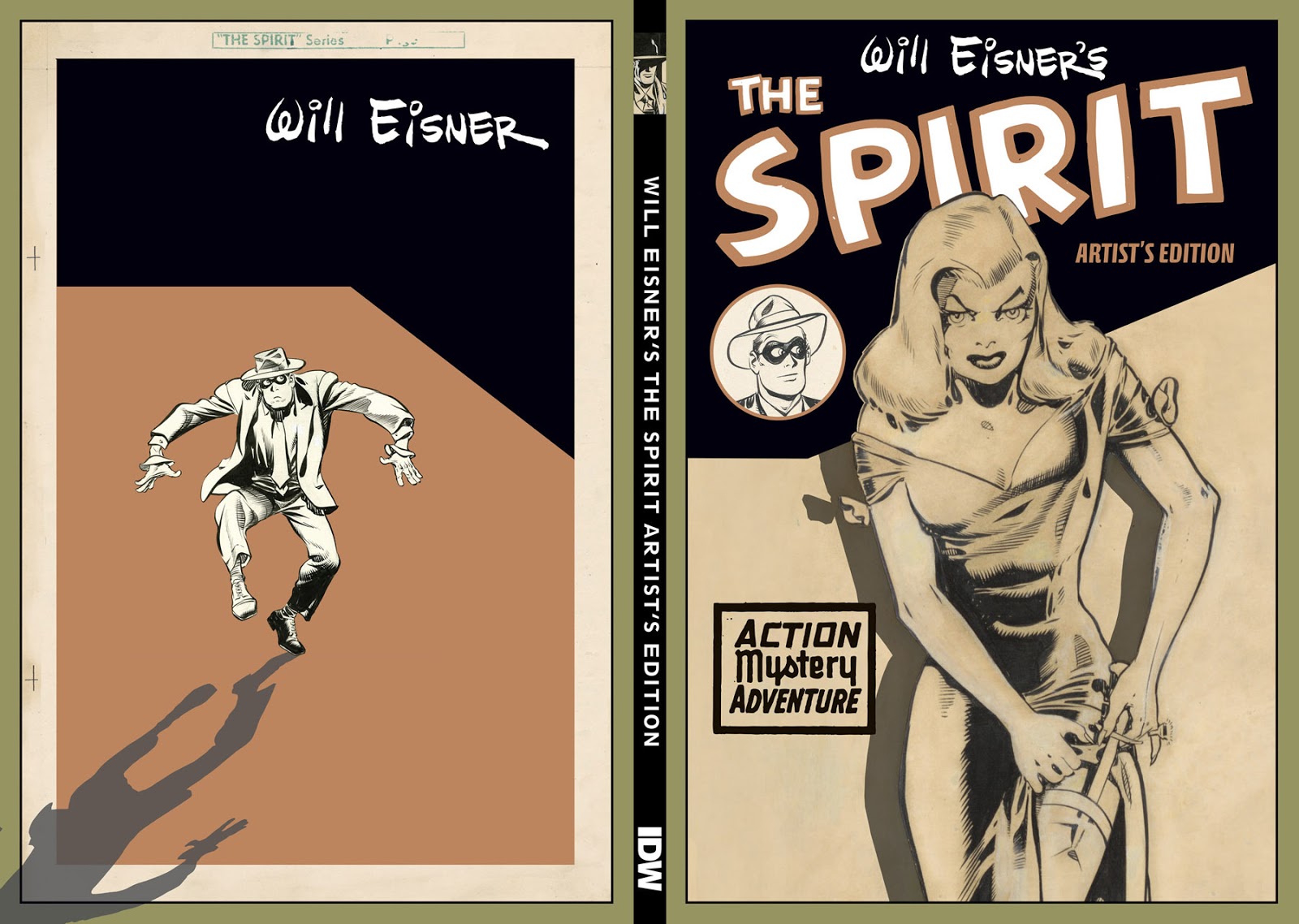
To date, this is my favourite Dahlk design. The chapter dividers especially, utilizing Eisner’s art, shadow, and quotes from various interviews brought these beyond mere story breaks to become an integral part of the material. Here are his thoughts on the work.
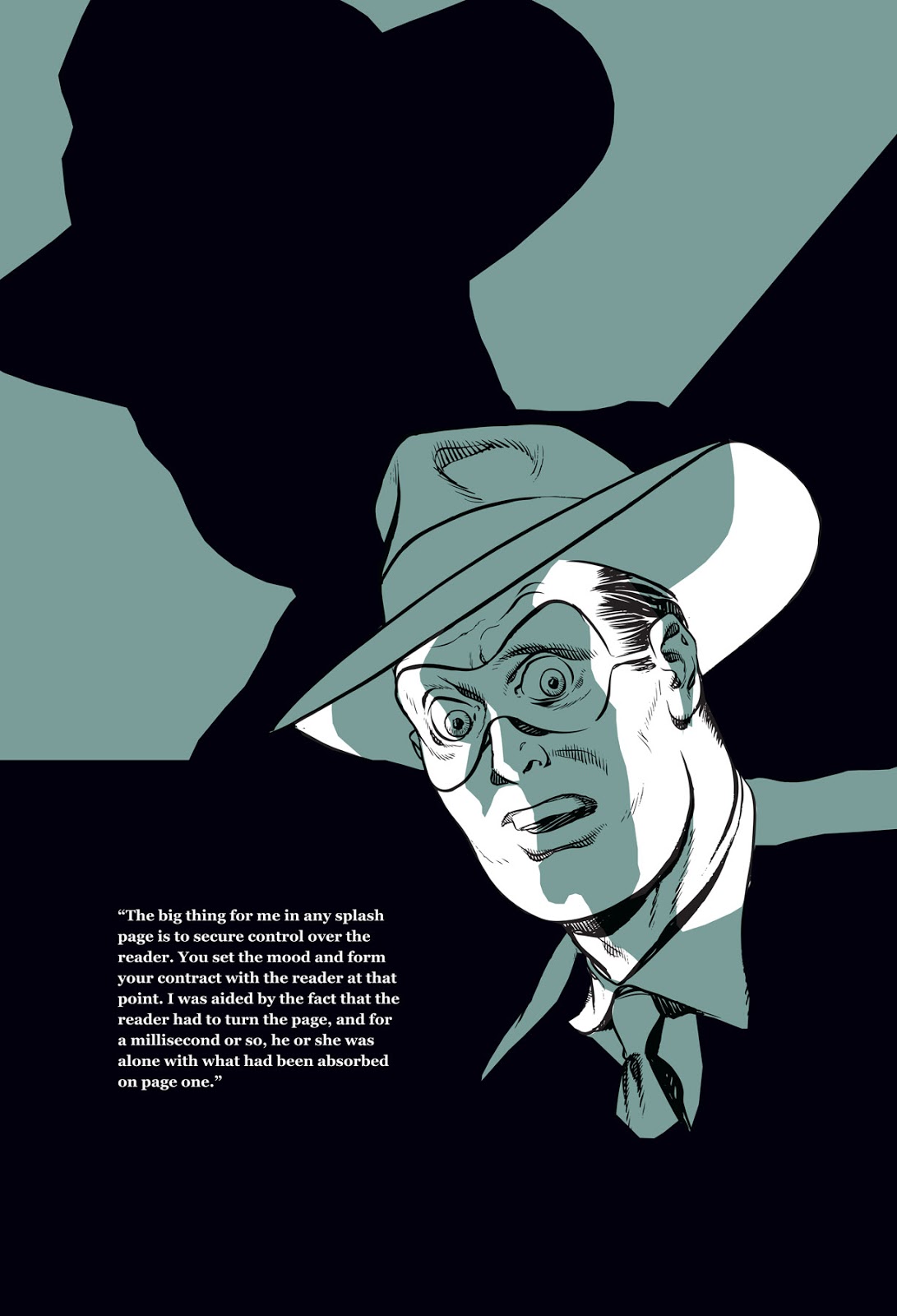
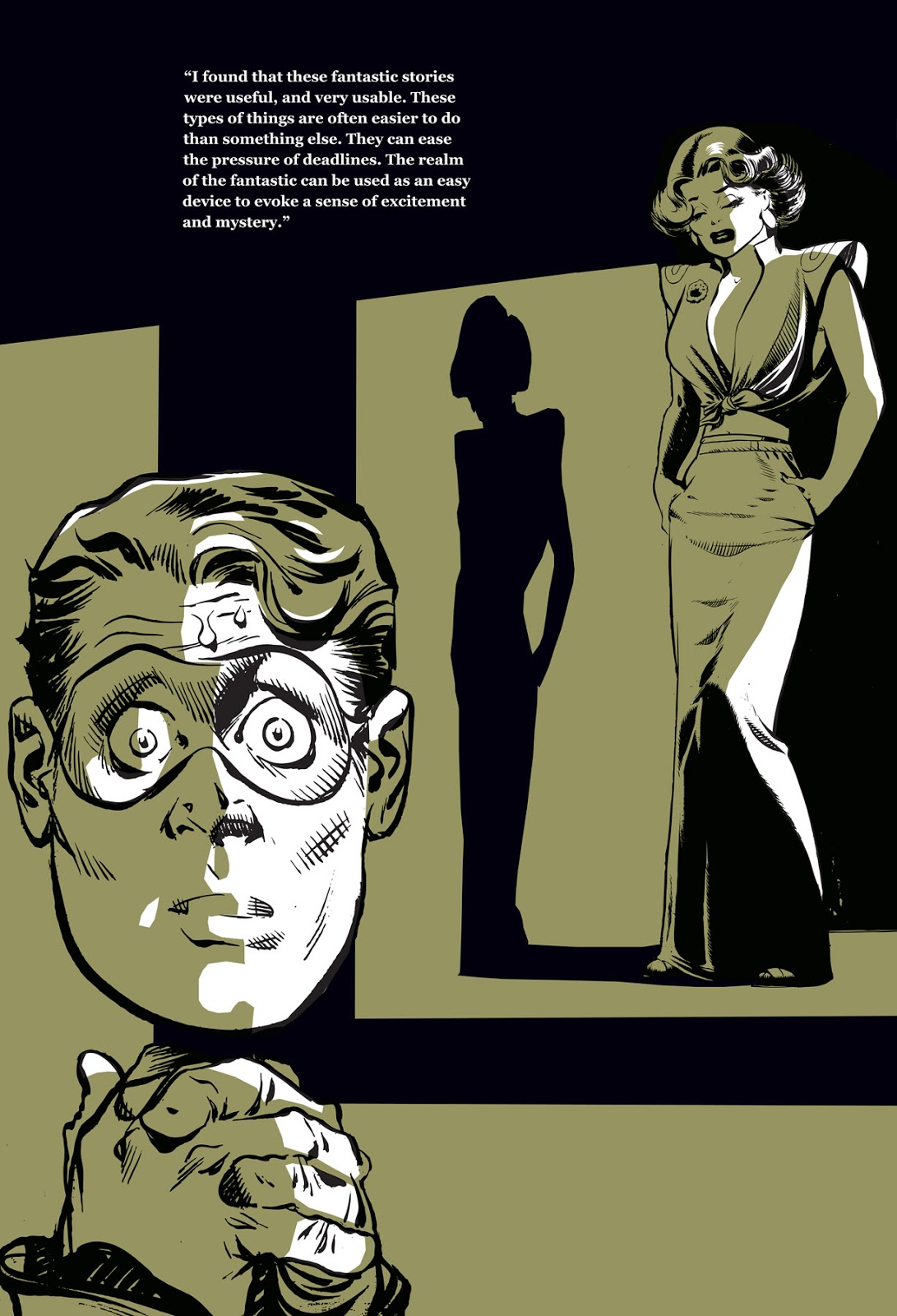
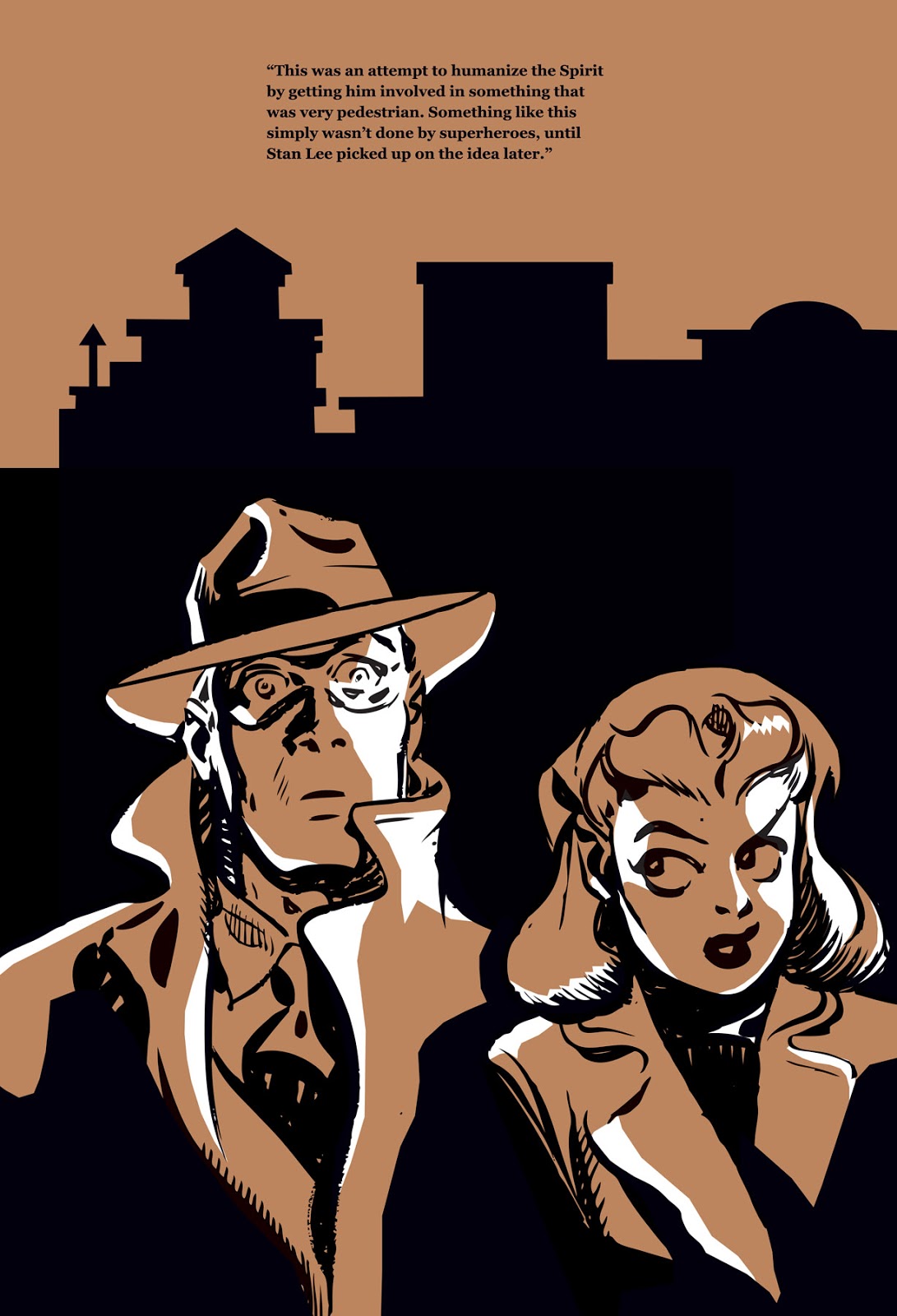
When this book was first announced, John Lind was going to be designing it. John is a very talented designer who has designed numerous books with his partner Denis Kitchen. John was able to design the cover to the regular edition of the Spirit book, but because of delays and scheduling conflicts, he was unable to design the rest of the book. But, in the end, that was good news for me.
When designing this book, I wanted to emphasis the noir aspects of the art. Eisner was so talented in creating atmosphere through light and shadows. I wanted to design in that same direction. I used individual images, and bits and pieces of panel art to re-construct new situations and scenarios. I wanted the chapter dividers I created, to maintain the moodiness of the book. I chose colors that were “smokey” and somewhat dirty, then I added bright hi-lights to the images. I wanted the art to have a strong direct light source, that in turn would pull the figures out of the dark. It adds a sense of danger and drama. It was quite a treat to work with Mr. Eisner’s highly revered characters, and be able to add my humble spin to them!
Randall Dahlk via his blog, 2013
Sales from its initial month were estimated at 1518. Between its announcement and publication, six other Artist’s Editions were published.
This first group of five, to me, represents the first wave of Artist’s Editions, announced between March 2010 and July 2011. Five books published, three with second printings. Convention exclusive covers and remarqued volumes, adding to the exclusivity and collectiveness of the line.
First off, we’re going back to press on Wally Wood’s EC Stories: Artist’s Edition. It was a difficult decision; from the start of the Artist’s Edition program we had made it clear that these would be one-time ventures, [that] when they were gone they were gone. Part of that was based on pure financial reasoning — these are big books, expensive to produce. And you have to realize, we overprinted Wood by a good margin. But retailers deluged us with reorders, and our direct-to-consumer sales were very brisk as well. This might sound corny but it’s really true — people demanded that this book be reprinted. I mean, we got reports of fights breaking out in stores over copies, how crazy is that?
Scott Dunbier, March 2012, via The Comics Reporter




